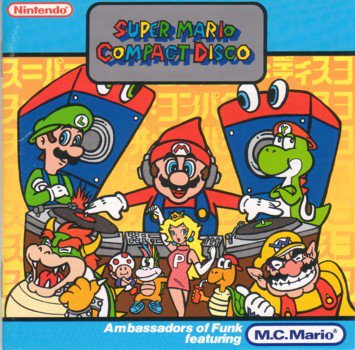Of all the admired documents of government in the history of the world, the United States constitution is around the top of the list. But the constitution wasn’t just a product of legal spontaneous generation. Parts of it spent decades in the making. The trial of John Zenger in the 1730s caused the English concept of seditious libel to fall out of favor with the early colonists, and may have influenced parts of the first amendment.
If not for a former New York Governor named William Cosby, John Zenger’s name would have passed into obscurity. Cosby was an unpopular man who invited disapproval almost from the minute he set foot on New York soil. Upon arrival to the colony, Governor Cosby demanded half the salary of the interim acting Governor, Rip Van Dam. Van Dam agreed, but only if Cosby would in turn hand over half the perquisites he was paid in London, which was several thousand pounds greater than the salary of an interim New York governor (Linder). Of course, Cosby refused to hand over any of his money, and instead he sued Van Dam. Knowing that Van Dam was an incredibly popular public figure, and that he would have no chance in a jury trial, Cosby had the Supreme Court of New York try the case without the benefit of a jury. The court ruled in Cosby’s favor two to one, but Cosby demanded to know why the dissenting judge, Lewis Morris, ruled against him. Morris had his reply printed publicly by a man named John Zenger. This so angered Governor Cosby that he “‘went ballistic,’ removing Morris as Chief Justice and replacing him with a staunch royalist, James De[L]ancey” (Linder).
The public greatly scorned Cosby for this, which lead to Morris, Van Dam, and the enigmatic James Alexander mounting a political challenge against him. They accomplished this by founding an independent newspaper printed by John Zenger to present opinions to the public contrary to Cosby’s. At first Cosby ignored this, but after several months, Cosby and his cronies tried to have the paper shut down under the English law of seditious libel. Seditious libel is the concept that it is a crime to print or say anything that disparages the government. But since the author(s) of the libel could not be determined, Cosby ordered that all of Zenger’s papers “be burned by the hands of the common hangman, as containing in them many things derogatory of the dignity of His Majesty’s government, reflecting upon the legislature and upon the most considerable persons in the most distinguished stations in the Province, and tending to raise seditions and tumults among the people thereof” (Buranelli 82). Cosby then had Zenger arrested and sent to prison. The Chief Justice, James DeLancey, also violated the English Bill of Rights by setting Zenger’s bail unattainably high. For although “...all [Zenger’s] non-exempt property amounted to less than £40, DeLancey set bail at £400...” (Moglen).
The trial itself began with Zenger’s attorneys, James Alexander and William Smith, being disbarred. Zenger was appointed a new lawyer, John Chambers, but the real task of defending him fell to a fellow who went by the moniker Andrew Hamilton. It was James Alexander, the author of the libel, who brought Hamilton in to represent Zenger, and who also provided Hamilton with Zenger’s legal defense (Levy 129). Using Alexander’s prepared legal brief, Hamilton set the truly extraordinary tone of the trial by stating flat out that his client, John Peter Zenger, had indeed published seditious libel. According to English law, it was of no consequence whether or not the libel was true, just that it was printed. By admitting that it had been, Hamilton effectively confessed Mr. Zenger’s guilt to the charge of seditious libel. It was only through his eloquence that Hamilton would keep John Zenger out of prison, and turn the tide of public opinion against punishing sedition.
Hamilton argued that the government should not silence the voice of those who have legitimate grievances to redress. He drew out the graphic nature of punishment for libel in England, and asked whether or not it should be the law of New York (Linder). Therefore, Hamilton wasn’t arguing that Zenger was innocent. He was arguing that Zenger was completely guilty of the crime, but should be acquitted because the law was repugnant. This concept is called “jury nullification,” and occurs when a jury believes the “...strict application of [a] law in a particular case will produce an injustice rather than general disagreement with the law in principle” (Roberts 97). Nevertheless, the outcome was as unpredictable as it was astonishing. After being told by judge DeLancey that it was their job to decide whether or not the law had been broken (and clearly, by Hamilton’s own admission, it had), the jury effectively ran roughshod over the law itself. A verdict of “not guilty” was met by three “huzzahs” by the spectators in the courtroom (Linder), which was the norm at the time.
John Zenger’s verdict was not just a refutation of Governor Cosby’s policies and politics; it was the death knell of public acceptance for sanctions against sedition. For under the jury system, laws regarding punishment for seditious libel became unenforceable (Introduction to the Free Speech Clause). Many states eventually adopted laws making sedition legally protected speech. Thus, the freedom to print editorials showing disapproval of government officials continued for several decades, culminating with the incorporation of press freedom in the first amendment. Making freedom of the press a constitutionally protected right was, however, an uphill battle.
When it came time to send the Constitution to be confirmed by the states, one of the main deterrents to widespread support for ratification was the lack of a Bill of Rights. The main argument against inclusion of such a bill was that it was unnecessary in a republic governed by enumerated powers. Early Federalists believed that while individual states held near-absolute power, the federal government was limited in range to only the powers granted to it by the constitution (Slonim). As Alexander Hamilton put it in
Federalist No. 84, “...why declare that things shall not be done which there is no power to do? Why, for instance, should it be said that the liberty of the press shall not be restrained, when no power is given by which restrictions may be imposed?” By making this contention, Hamilton argued that a bill of rights to protect freedoms such as the right to print sedition
at the federal level would only end up endangering those very rights. By creating exceptions, Hamilton felt that it would give credence to the federal government, at some later date, in accruing powers outside of its proper scope (Slonim). In this sense, the effect of Zenger on the first amendment, and indeed, the whole of the bill of rights is clearly felt, albeit in passing. For in Hamilton’s mind, sedition, whether true or false, was not in the scope of the federal government to be dealt with, and therefore should not be mentioned constitutionally out of fear that it would confer extra powers onto the federal government.
But despite the protests of the Federalists, the twelve amendments proposed to remedy the lack of a constitutional bill or rights was eventually approved by Congress and sent to the states for ratification. The last ten of these were ratified by 1791, becoming the official bill of rights. For a while nothing happened to challenge the freedom of the press. Then John Adams became president and the right to print sedition came up once again.
The year was 1798. John “Old Sink or Swim” Adams was president. A balding and diminutive president, John Adams was a Federalist who was facing an imminent war with France and opposition from what would eventually become the Republican, and then the Democratic Party. The quasi-war with France never turned into a full-scale conflagration, but throughout the conflict, and for the duration of Adams’ term, Jefferson and his anti-federalists continued to be a proverbial thorn in Adams’ side. To quell this political opposition, Adams and the Federalist majority Congress passed the Sedition Act, along with the equally forlorn Alien Act (American Experience).
The Sedition Act made it a crime to criticize the federal government. However, it was argued by the Federalists that this was not in violation of the first amendment since it allowed truth as a defense, and because it did not censor material that hadn’t yet been printed, a concept known as “prior restraint” (Foner). The measure was really a potshot by the Federalist government at the Jeffersonians, and several Republican editors and journalists, such as William Duane, were charged with sedition and until Jefferson assumed the office of president and dismissed such claims. But even in the Federalist argument, the echo of the Zenger trial is felt. Back in the 1730s, the mere notion of printing something that derided the government was sedition, and punishable. The Sedition Act, albeit contrary to the concept of a free and independent press, allowed the print of sedition that could be verified as true.
That is not to say that the Sedition Act of 1798 was constitutional. The Supreme Court never had a chance to rule on the law’s constitutionality, since no case regarding it was ever brought before the court. Moreover, the act expired in 1800, preventing any cases involving it from ever being brought before the court. After the act expired, the courts took a more libertarian approach to the first amendment, and rejected seditious libel as a crime (Press, Freedom of The). A more immediate and direct response to the Sedition Act, and also to the Alien Act which it is often associated with, was Thomas Jefferson and James Madison collaborating on the Kentucky and Virginia Resolutions. The resolutions effectively gave the states veto power over any federal law the legislatures of said states deemed to be repugnant to the constitutional scope of the federal government. This was decried by seven state legislatures as itself inflammatory, unconstitutional, and destructive (Lynch 201). It is fortunate that the Sedition Act died with Adams’ term, as it settled in the mind of the people the constitutional right to a generally free press.
Within the span of a hundred years, sedition against the government went from being a crime in and of itself to being a constitutionally protected right. In the 1730s, a man lost his freedom for several months for merely printing sedition. A half-century later, the first Congress was debating as to whether the ratification of a bill of rights would protect or destroy such essential freedoms and liberties by enumerating them. As Gouverneur Morris, the grandson of Lewis Morris, the judge who ruled against William Cosby that fateful day in April 1733 professed, “The trial of Zenger in 1735 was the germ of American freedom, the morning star of that liberty which subsequently revolutionized America” (qtd. in Capistron).
Works Cited:- “American Experience | John & Abigail Adams | People & Events | PBS,” PBS Online. 12 Feb. 2006 <http://www.pbs.org/wgbh/amex/adams/peopleevents/e_president.html>.
- Buranelli, Vincent. The Trial of Peter Zenger (New York: New York University Press, 1957) 82, Questia, 12 Feb. 2006 <http://www.questia.com/PM.qst?a=o&d=3559822>.
- Capistron, Caitlin. The Zenger Case and Freedom of the Press in America 12 Feb. 2006 <http://www.harwich.edu/depts/history/HHJ/zen.html>.
- Introduction to the Free Speech Clause 12 Feb. 2006 <http://www.law.umkc.edu/faculty/projects/ftrials/zenger/freespeech.htm>.
- Foner, Eric. “Suspension of Disbelief,” The Nation 6 Dec. 2004: 36, Questia, 12 Feb. 2006 <http://www.questia.com/PM.qst?a=o&d=5008546064>.
- Linder, Doug. “The Trial of John Peter Zenger: An Account.” 2001. 12 Feb. 2006. <http://www.law.umkc.edu/faculty/projects/ftrials/zenger/zengeraccount.html>.
- Levy, Leonard Williams. Freedom of Speech and Press in Early American History Freedom of Speech and Press in Early American History (Cambridge, MA: Bleknap Press of Harvard University, 1960) 126, Questia, 13 Feb. 2006 <http://www.questia.com/PM.qst?a=o&d=98967071>.
- Lynch, Joseph M. Negotiating the Constitution: The Earliest Debates over Original Intent (Ithaca, NY: Cornell University Press, 1999) 201, Questia, 13 Feb. 2006 <http://www.questia.com/PM.qst?a=o&d=106763197>.
- Moglen, Eben. “Considering Zenger: Partisan Politics and the Legal Profession in Provincial New York.” 1998. 12 Feb. 2006. <http://emoglen.law.columbia.edu/publications/zenger.html>.
- “Press, Freedom of The,” The Columbia Encyclopedia, 6th ed., Questia, 12 Feb. 2006 <http://www.questia.com/PM.qst?a=o&d=101265842>.
- Roberts, Julian V. Stalans, Loretta J. Indermaur, David. Hough, Mike. Penal Populism and Public Opinion: Lessons from Five Countries (New York: Oxford University Press, 2003) 93, Questia, 12 Feb. 2006 <http://www.questia.com/PM.qst?a=o&d=103962952>.
- Slonim, Shlomo. “The Federalist Papers and the Bill of Rights,” Constitutional Commentary 20.1 (2003), Questia, 12 Feb. 2006 <http://www.questia.com/PM.qst?a=o&d=5006372562>.

















